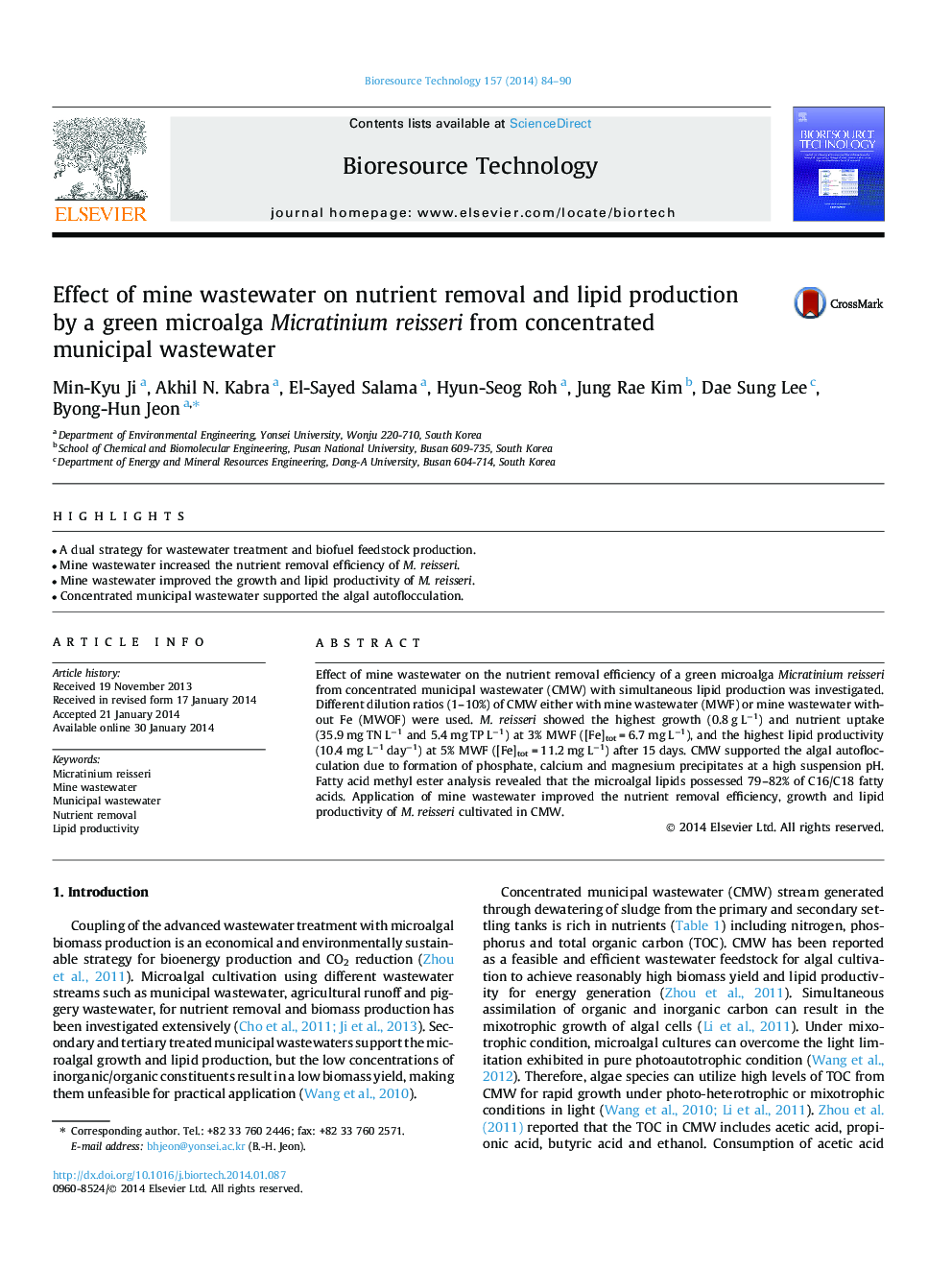| Article ID | Journal | Published Year | Pages | File Type |
|---|---|---|---|---|
| 680931 | Bioresource Technology | 2014 | 7 Pages |
•A dual strategy for wastewater treatment and biofuel feedstock production.•Mine wastewater increased the nutrient removal efficiency of M. reisseri.•Mine wastewater improved the growth and lipid productivity of M. reisseri.•Concentrated municipal wastewater supported the algal autoflocculation.
Effect of mine wastewater on the nutrient removal efficiency of a green microalga Micratinium reisseri from concentrated municipal wastewater (CMW) with simultaneous lipid production was investigated. Different dilution ratios (1–10%) of CMW either with mine wastewater (MWF) or mine wastewater without Fe (MWOF) were used. M. reisseri showed the highest growth (0.8 g L−1) and nutrient uptake (35.9 mg TN L−1 and 5.4 mg TP L−1) at 3% MWF ([Fe]tot = 6.7 mg L−1), and the highest lipid productivity (10.4 mg L−1 day−1) at 5% MWF ([Fe]tot = 11.2 mg L−1) after 15 days. CMW supported the algal autoflocculation due to formation of phosphate, calcium and magnesium precipitates at a high suspension pH. Fatty acid methyl ester analysis revealed that the microalgal lipids possessed 79–82% of C16/C18 fatty acids. Application of mine wastewater improved the nutrient removal efficiency, growth and lipid productivity of M. reisseri cultivated in CMW.
